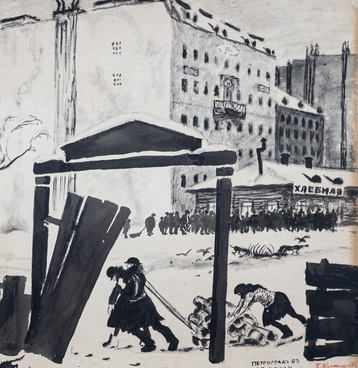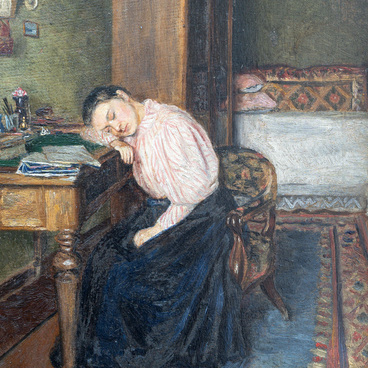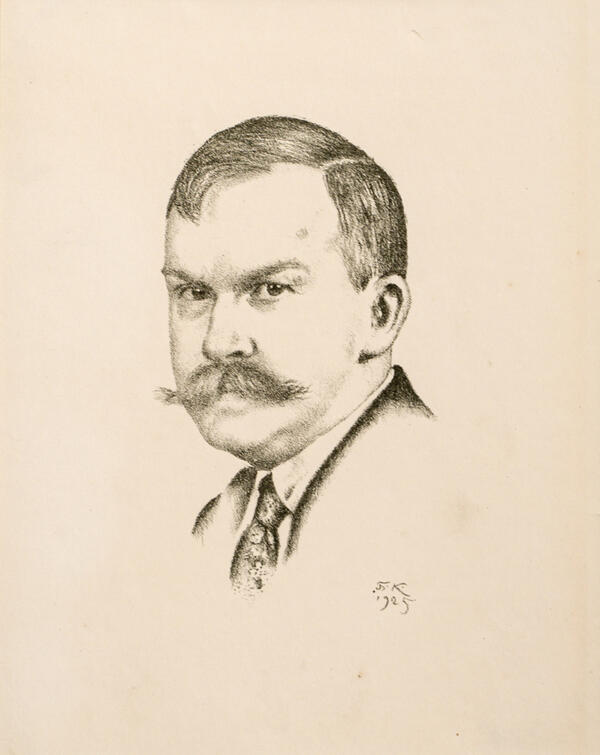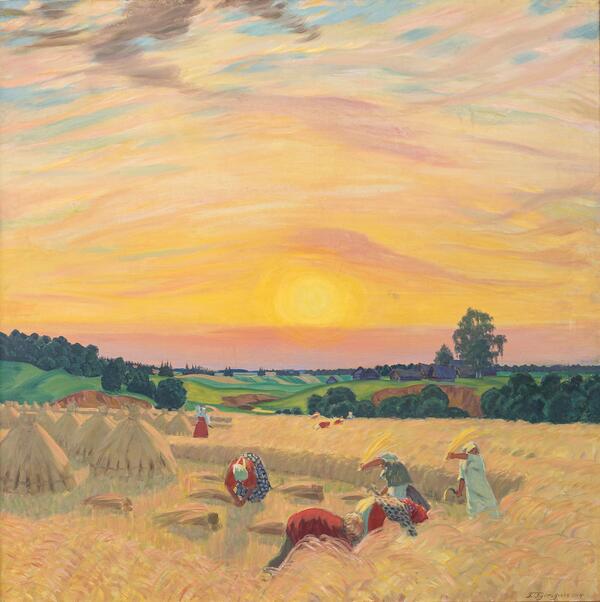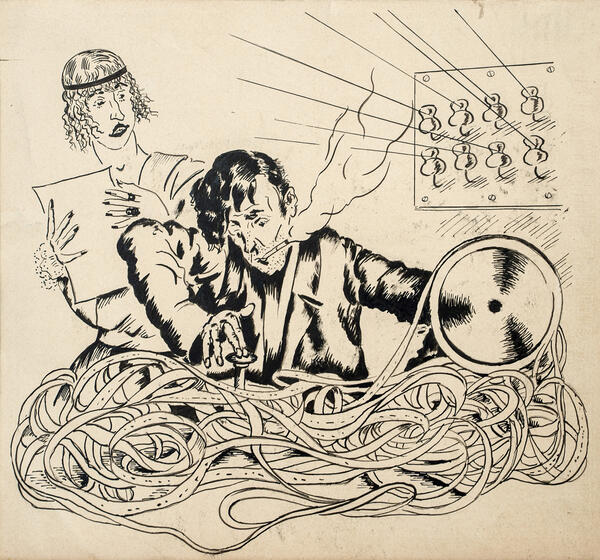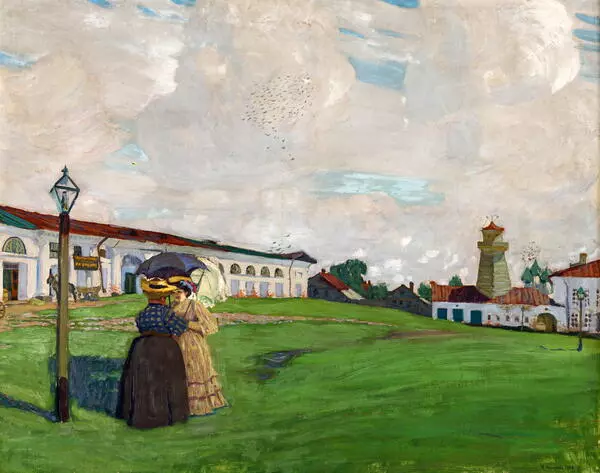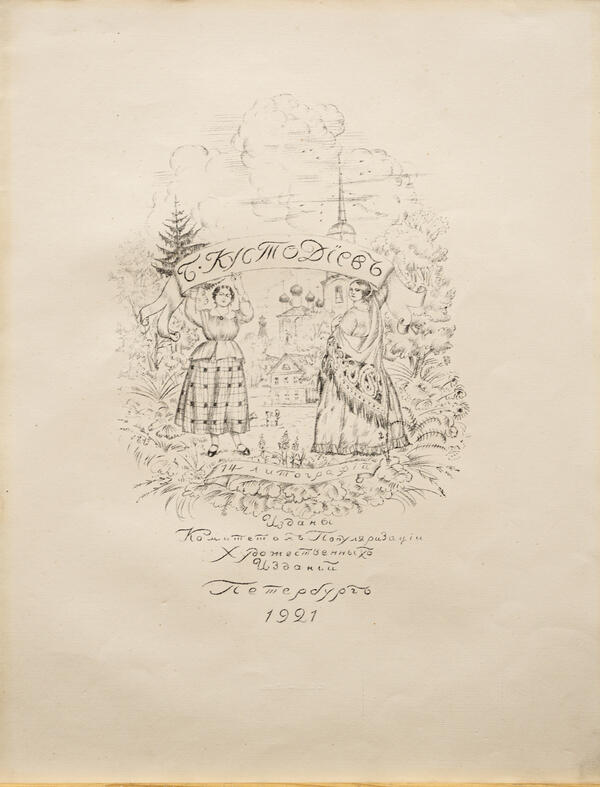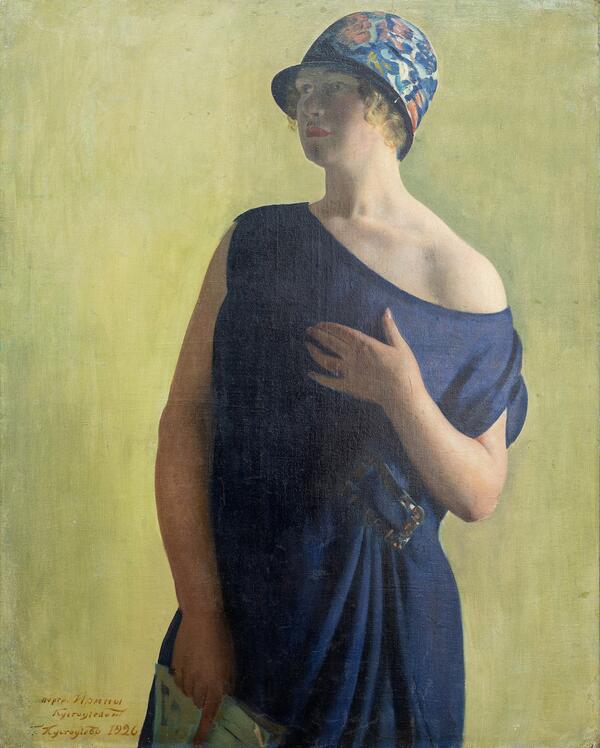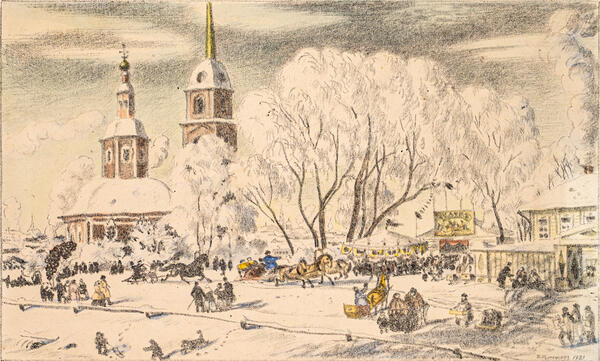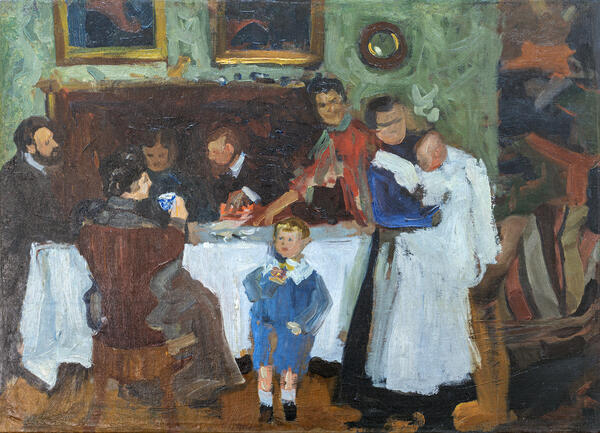The gallery of portraits made by Boris Kustodiev is very large and diverse. Each portrait unveils a special relationship between the artist and his model. The portrait of Natalia Illarionovna Zelenskaya from the collection of the Boris Kustodiev House Museum is no exception.
A tall, slender, blue-eyed woman is depicted against the background of an open balcony with a view of the snow-capped peaks of the Swiss Alps. The artist met her while receiving medical treatment at the clinic of Dr. Rollier in Switzerland. He visited the clinic twice: in January 1911 with his wife Yulia and children Kirill and Irina; and in 1912 — that time alone to continue his treatment. In the town of Leysin, where the clinic was located, there was a small community of Russians who came there for treatment. They actively communicated with each other, arranged musical evenings, even staged dramatizations of fairy tales. Kustodiev participated in these events as much as possible. On one occasion he even designed the scenery for the dramatization. Zelenskaya immediately attracted the artist’s attention with her unusual appearance, amazing skin color, fragility and mobility. He asked her to pose and she agreed reluctantly, saying she was very busy.
In this portrait, Kustodiev sought to convey the similarity and inner unity between the tender colors of the snowy peaks and the woman’s skin tone. The dark hair styled in a sophisticated manner is in harmony with the model’s black outfit — a blouse with transparent sleeves, decorated with several rows of small buttons, and a tight fitting skirt. When creating this portrait, Kustodiev used a spectacular technique he discovered not that long ago — contrasting a dark silhouette against a bright, soft, almost festive background. This technique would be used repeatedly in Kustodiev’s works. However, Kustodiev was not too pleased with the result. Due to lingering health issues this painting took a long time to complete. Zelenskaya was in a hurry to leave. It was hard for the artist to work on the portrait. He had to do so while wearing an uncomfortable corset, which was so tight, that even turning the neck required some effort. Dr. Rollier considered it to be a necessary measure.
The portrait was finished only
in St. Petersburg. It is hard to say why it wasn’t
sent to the model. Perhaps it was because this time the artist did not paint on
commission, but “by the will of the soul”, for himself. The portrait entered
the collection of the Astrakhan Art Gallery in 1929 as a gift from the artist’s
wife Yulia Kustodieva.


